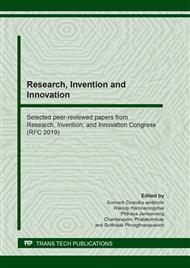p.8
p.15
p.21
p.29
p.36
p.43
p.50
p.57
p.66
Effect of Double-Step Solution Treatment on Rejuvenation Heat Treated Microstructure of IN-738 Superalloy
Abstract:
This work investigates the effect of rejuvenation heat treatment, with double-step solution treatment at the temperature from 1150 °C to 1200 °C, on the recovered microstructure of IN-738 cast superalloy. The superalloy has been long-term exposed as a turbine blade in a gas turbine prior to this study. After double solution treatment and aging at 845 °C for 12 h and 24 h, the recovered microstructures were examined by using a scanning electron microscope. Coarse γ΄ particles, that have presented in damaged microstructures, could not be observed in the samples after the rejuvenation heat treatment. In addition, the image analysis illustrates that the reprecipitated γ΄ particles in the samples with double-step solution treatments increase significantly in sizes during aging than that in the samples with the single-step solution treatment. Furthermore, the measurement of the samples hardness presents that the as-receive sample hardness is improved after rejuvenation heat treatment studied in this work.
Info:
Periodical:
Pages:
36-42
Citation:
Online since:
August 2020
Authors:
Price:
Сopyright:
© 2020 Trans Tech Publications Ltd. All Rights Reserved
Share:
Citation:


